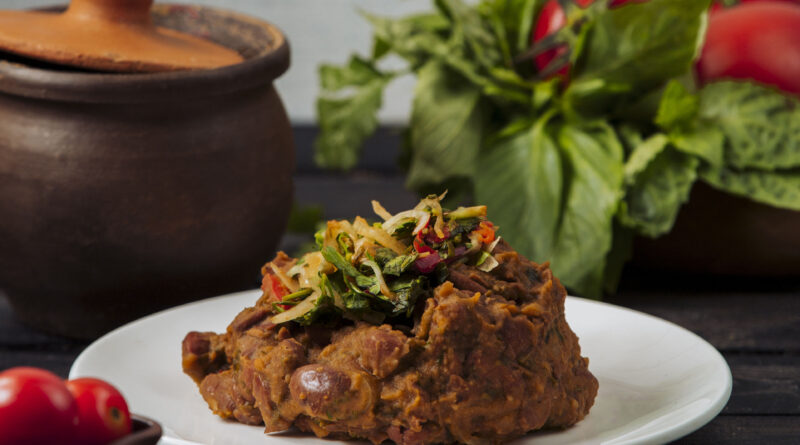Shahan ful
Exploring the Rich Flavors and Cultural Heritage of Shahan Ful: A Culinary Journey through Yemeni Cuisine
Introduction:
Yemen, a country with a rich cultural tapestry and a history that dates back thousands of years, boasts a cuisine that is as diverse and unique as its landscapes. Among the myriad of traditional dishes that define Yemeni gastronomy, Shahan Ful stands out as a flavorful and hearty delight. In this culinary journey, we will delve into the origins, ingredients, preparation, and cultural significance of Shahan Ful, uncovering the secrets that make it a beloved dish in Yemen and beyond.
I. Origins of Shahan Ful:
Shahan Ful, often referred to simply as “Ful,” traces its roots back to Yemen’s ancient history. The dish has been a staple in Yemeni households for generations, with its origins deeply intertwined with the country’s agricultural traditions and the availability of local ingredients. Ful, or fava beans, are the star ingredient, and their cultivation and consumption have been integral to Yemeni culture for centuries.
II. Ingredients That Create the Magic:
The simplicity of Shahan Ful belies the complexity of its flavors. The key ingredients include:
- Fava Beans (Ful): The heart of the dish, fava beans provide a rich source of protein, fiber, and essential nutrients. They are soaked, boiled, and mashed to form the base of Shahan Ful.
- Olive Oil: A staple in Mediterranean and Middle Eastern cuisines, olive oil adds a velvety richness to the dish, enhancing its overall taste and providing a dose of healthy fats.
- Garlic: The aromatic allure of garlic is unmistakable in Shahan Ful. It is minced and sautéed to release its flavors, infusing the dish with a pungent and savory essence.
- Lemon Juice: The citrusy brightness of lemon juice cuts through the richness of the beans and olive oil, adding a refreshing and zesty dimension to the dish.
- Cumin: This earthy spice brings warmth and depth to Shahan Ful, complementing the natural nuttiness of the fava beans.
- Tomatoes and Onions: Diced tomatoes and onions contribute freshness and a subtle sweetness, balancing the dish’s flavors and textures.
III. Preparation of Shahan Ful:
Shahan Ful is a dish that requires patience and a meticulous approach to achieve its perfect balance of flavors. The traditional preparation involves the following steps:
- Soaking and Boiling Fava Beans: The dried fava beans are soaked overnight to soften them. They are then boiled until tender, ready to be mashed into a creamy consistency.
- Sautéing Garlic: In a separate pan, minced garlic is gently sautéed in olive oil until golden brown, infusing the oil with its aromatic essence.
- Mashing Fava Beans: The boiled fava beans are drained and mashed to form a smooth, creamy base. The sautéed garlic and olive oil are then added to this mixture, creating a luscious texture.
- Seasoning with Spices: Cumin, salt, and other spices are added to the mixture, intensifying the flavors and providing a harmonious blend of tastes.
- Adding Fresh Ingredients: Diced tomatoes, onions, and a generous squeeze of lemon juice are incorporated into the dish, adding a burst of freshness and enhancing the overall vibrancy.
- Serving with Bread: Shahan Ful is traditionally served with flatbreads such as Malooga or Yemeni Khubz, creating a perfect synergy of textures and flavors.
IV. Cultural Significance of Shahan Ful:
Beyond its delightful taste, Shahan Ful holds cultural significance in Yemen. It is often enjoyed as a communal meal, bringing families and friends together. The act of sharing a plate of Shahan Ful fosters a sense of unity and camaraderie, reflecting the importance of hospitality in Yemeni culture.
Shahan Ful is also a versatile dish, served for breakfast, lunch, or dinner. Its nutritious profile makes it a popular choice for those seeking a wholesome and fulfilling meal. Additionally, the affordability of its ingredients has made Shahan Ful a staple for people from all walks of life, embodying the egalitarian spirit of Yemeni cuisine.
V. Beyond Yemen: Shahan Ful’s Global Appeal:
In recent years, Shahan Ful has gained popularity beyond Yemen’s borders, finding its way onto international tables. Yemeni diaspora communities around the world have introduced this delectable dish to new audiences, sparking an appreciation for its unique flavors and cultural heritage.
Restaurants and food enthusiasts alike have embraced Shahan Ful for its simplicity, affordability, and nutritional value. Its vegetarian and vegan-friendly nature has also contributed to its global appeal, making it a favorite among those seeking plant-based options that don’t compromise on taste.
VI. Shahan Ful Variations:
While the traditional recipe remains cherished, regional variations of Shahan Ful have emerged, showcasing the diversity within Yemeni cuisine. Some variations incorporate additional ingredients like bell peppers, chili, or herbs, providing a personalized touch to the classic dish. These adaptations highlight the flexibility of Shahan Ful, allowing for creative interpretations while maintaining its core essence.
VII. Conclusion:
In conclusion, Shahan Ful is not just a dish; it’s a celebration of Yemeni culture, history, and the art of creating a harmonious blend of flavors. From its humble origins rooted in ancient traditions to its global appeal in contemporary times, Shahan Ful stands as a testament to the enduring power of culinary heritage.
As we savor the rich tapestry of Shahan Ful, let us appreciate the cultural exchange that occurs with every bite, fostering connections and understanding across borders. So, whether you find yourself in a bustling Yemeni market or a cozy kitchen halfway across the globe, let Shahan Ful be your guide to a culinary journey that transcends time and place.



